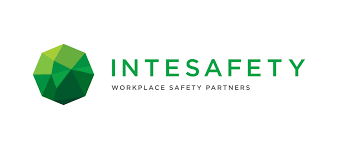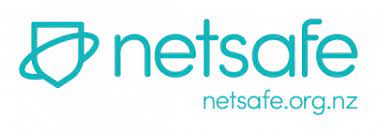Address
304 North Cardinal St.
Dorchester Center, MA 02124
Work Hours
Monday to Friday: 7AM - 7PM
Weekend: 10AM - 5PM
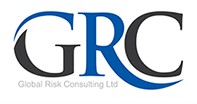

Protecting people, assets and information
Case Study
Explore how our risk and crisis management solutions distinguish themselves by aligning with the GRC Hazard Model. While drawing similarities from NZ NEMA’s ‘Model of a Resilient Nation’ and the UN’s ‘Human Security’ model, our approach stands out for its nuanced layering of hazard spaces. This distinctive feature tailors solutions to the scope and specificity required by individual communities.
A taxonomy of hazard spaces

Protecting organisations and communities from harm starts with a holistic understanding of the hazard-scape. The GRC Hazard Model considers security and wellbeing in terms of seven interlinked hazard ‘layers’.
Hazard: A process, phenomenon or human activity that may cause loss of life, injury or other health impacts, property damage, social and economic disruption or environmental degradation.*
* National Disaster Resilience Strategy Ruataki ā-Motu Manawaroa Aituā
These layers describe categories of hazard events – from crime to political violence, pandemics, and natural disasters – each layer from left to right denoting categories
incrementally broader in potential scope. A pandemic event, for example, is – by definition – more widespread than a singular traffic accident or criminal act, and so on.
The GRC Hazard Model has similarities with security and resilience categories found in the NZ NEMA ‘Model of a Resilient Nation’ and the UN ‘Human Security’ model, but it differs from these in terms of its layering of hazard spaces in accordance with their potential scope and, by consequence, their specificity to a community and individual.
Our risk and crisis management solutions are built upon an approach that begins with an understanding of hazards based on the GRC Hazard Model. As detailed below, this approach is:
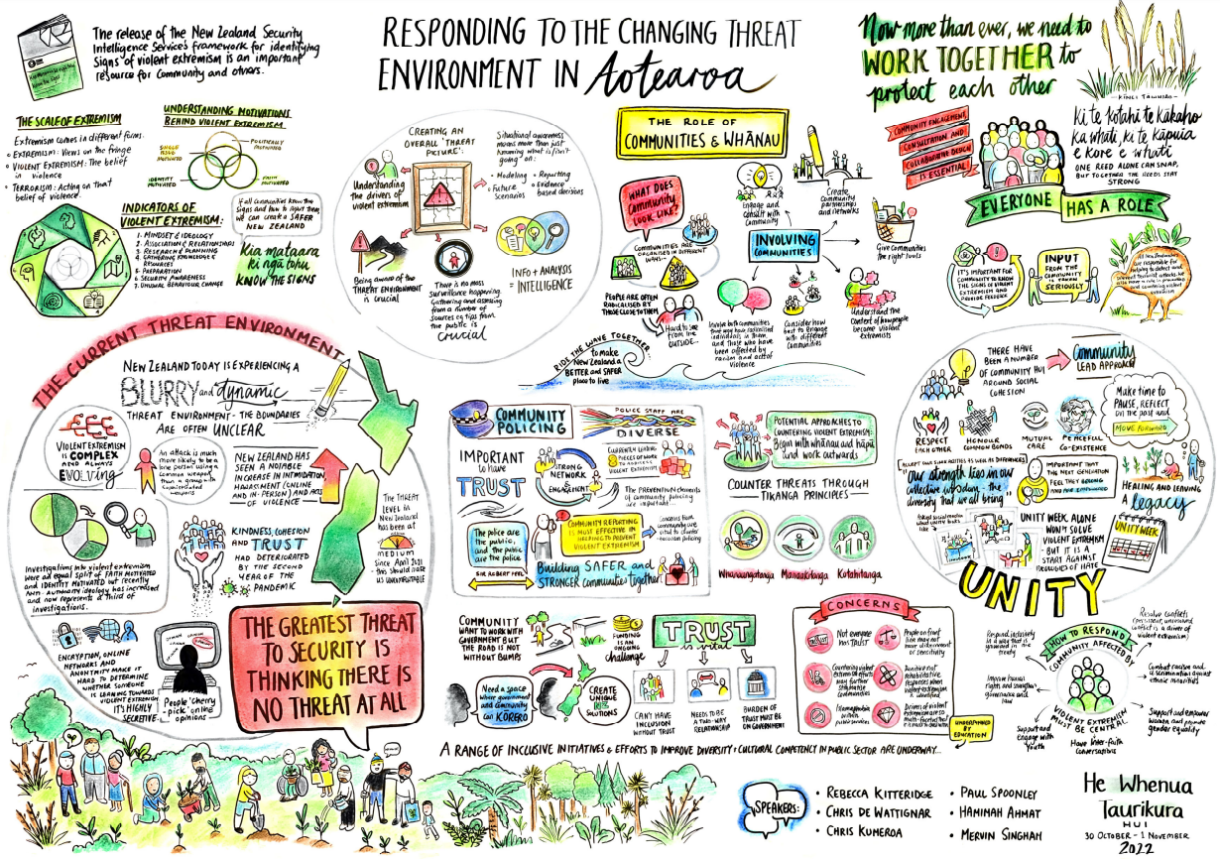
The first annual He Whenua Taurikura Hui 2021 was held in Christchurch in June 2021.
He Whenua Taurikura Hui 2022
This year, the focus of the hui was on all-of-society approaches to whakahōtaetae – preventing terrorism and violent extremism in Aotearoa New Zealand.
Almost 300 people attended the hui in person. Approximately 15 percent of attendees were from academia, 40 percent were from communities and civil society, and approximately one third were representatives of central and local government.
We acknowledge Ngāti Whātua Ōrākei as mana whenua who hosted the hui and provided manaakitanga to the attendees, creating a safe space to hold challenging but important conversations.
The programme structure and the topics discussed were based on the four thematic outcomes identified in Aotearoa Katoa, the draft strategic framework for preventing and countering violent extremism (due to be released shortly).
Those outcomes are:
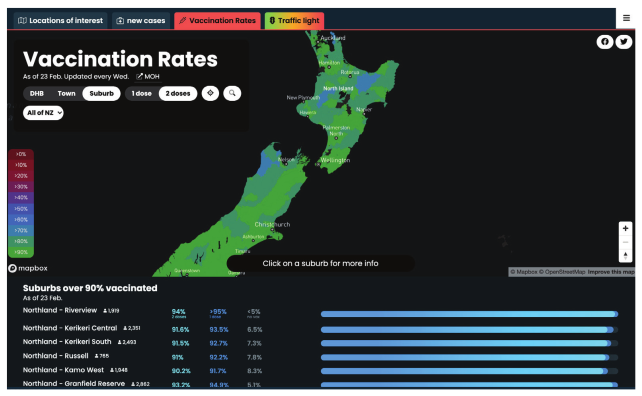
Above: A dashboard from the public-facing Covid-19 vaccination mapping site.
Below: A meshblock overview from the SecIntel Covid-19 vaccination mapping platform.
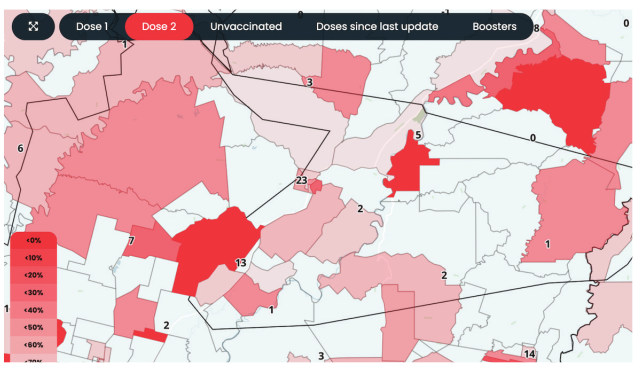
As part of the nationwide response to COVID-19, GRC Group partnered with several Iwi organisations to deliver an
evidence-based, data-driven approach to supporting the vaccination roll-out to vulnerable communities.
We utilised GRC’s SecIntel geomapping platform to develop a vaccination module populated with anonymised meshblock-level data provided via data sharing agreement by the Ministry of
Health.
The module mapped vaccination rates across participating Iwi and identified localities – and areas within localities – where vaccination rates were relatively
low and thus requiring of prioritisation. SecIntel reporting informed the planning of mobile operational teams and tracked their progress towards vaccination goals.
SecIntel’s social media monitoring
module also tracked public sentiment in relation to vaccinations on Facebook and Twitter, reporting on fluctuations
in volume and negativity/positivity of social media mentions from the national to the regional level.
We also collected ‘ground sentiment’ data collected by the mobile operational teams, which was anonymised and mapped on the SecIntel platform. Ground and social media sentiment analysis provided our participating Iwi partners with an evidence-based
understanding of the drivers for vacci-
nation avoidance in various localities, which included a range of factors from religious beliefs to Maori sovereignty positions, anti-vax sentiments, and misinformation.
In addition to the SecIntel platform, GRC’s Manaaki Crisis Management System (CMS) provided our partners with a cloud-based, accessible from anywhere, platform with which they could keep track of their response-focused personnel and resources, coordinate the logistical effort, document their actions,
and push out notifications as needed.
The CMS constituted a single source of truth and a ready reference for time and resource-starved coordinators.
GRC’s evidence-based, data-driven approach to supporting the vaccination roll-out provided timely intelligence that enabled our partners to pivot quickly to areas of immediate need and to understand the barriers to their mission.
Our responsible, privacy-conscious solutions provided meaningful insights enabling fit-for-purpose responses and the achievement of significant pub-
lic health outcomes for communities across Aotearoa.
